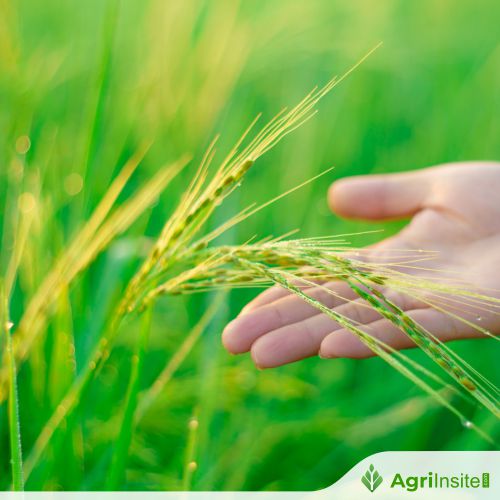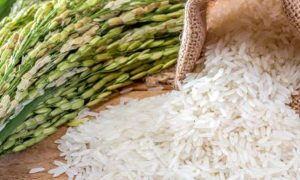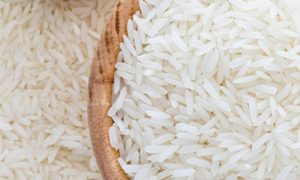Rice breeders explore gene editing to enhance nighttime heat tolerance

Efforts to develop rice varieties tolerant to high nighttime temperatures are advancing as warmer nights threaten yields and grain quality. Arkansas researchers explore gene editing and breeding techniques to address this challenge. Elevated nighttime temperatures can cause up to 90% yield loss and increase chalkiness, impacting quality. Genetic advancements, like editing Chalk5, aim to enhance tolerance and maintain quality.
Rice plants can deal with the heat during the day, but when the sun goes down, they need to chill out.
Developing rice with tolerance to higher nighttime temperatures has become a focus for rice breeders because studies are showing that nights are getting warmer in the largest rice-growing regions.
Half of the rice grown in the United States comes out of Arkansas, mostly from the Delta. Arkansas has been home to about 1.4 million acres planted in the grain that serves as a staple food for more than half of the world’s population, according to the USDA Economic Research Service.
“Rice breeders have tried to incorporate tolerance genes into the background of Arkansas rice, which is not an easy task,” said Vibha Srivastava, professor of plant biotechnology in the crop, soil and environmental sciences department for the University of Arkansas System Division of Agriculture. “They have just started to scratch the surface in that area, but they’re making good headway. Some promising updates are there.”
However, Srivastava said there may be another way forward—gene editing, which is different from genetic modification because it does not insert DNA sequences from other organisms, she explained
Srivastava explores the topic of breeding rice and the potential for gene editing to tolerate night heat in Current Opinion in Plant Biology with an article titled “Beat the heat: Breeding, genomics, and gene editing for high nighttime temperature tolerance in rice.”
Her co-authors of the article were Christian De Guzman, assistant professor of rice breeding and genetics, and Samual B. Fernandes, assistant professor of agricultural statistics and quantitative genetics, both researchers with the Arkansas Agricultural Experiment Station, the research arm of the University of Arkansas System Division of Agriculture.
It is the first review article about high nighttime tolerance in rice, to their knowledge, gathering all the available scientific literature on the subject in one place.
Srivastava said there has also been information on the subject published in the B.R. Wells Rice Research Series with studies led by Paul Counce, professor of rice physiology at the Rice Research and Extension Center, on screening rice for responses to high nighttime temperature, susceptibility, or tolerance.
Why night heat tolerance
When rice is in its flowering and grain-filling stages, it is more sensitive to high nighttime temperatures than high daytime temps. The optimum rice growing temperatures vary globally, but the authors point out that most rice varieties show sensitivity to nighttime temperatures above 28 Celsius, or 82.4 Fahrenheit.
The higher temperatures lead to yield losses and grain quality decline expressed as “chalkiness,” an undesirable characteristic that impacts milling quality, cooking quality and palatability.
Based on recent studies, the authors noted that the results of high nighttime stress can lead up to 90% loss in grain yield and a significant increase in chalkiness.
Srivastava said the genetic mechanisms of high nighttime stress susceptibility are not clear, but they know that an elevated respiration rate during high nighttime temperatures diverts energy from growth to repair and impacts the formation of biomass.
Challenges ahead
While there are no known modern cultivars bred in the United States that can withstand exposure to high nighttime temperatures during the reproductive stage, an Indian variety called Nagina 22 offers high nighttime tolerance. However, when grown in field conditions in Arkansas, it showed some undesirable traits like small grain size, chalkiness, and tall stalks susceptible to falling over, known as lodging.
Nagina 22 has been used in crosses with modern cultivars to get a high nighttime tolerance, but the genes have not been cloned. Without gene identity, the application of gene editing to improve the traits of popular cultivars is impossible, Srivastava said. In the meantime, she points to gene editing as another way to improve desirable traits in Nagina 22, or in crosses with Nagina 22.
A few advanced breeding lines in the Arkansas Rice Breeding Program could be candidates for gene editing if they show improved traits related to yield and grain chalkiness after high nighttime stress.
A critical consideration with Nagina 22 and its derivative lines, however, is to improve its naturally high grain chalkiness. Cloning and analysis of Chalk5, a major chalk region of DNA in rice, opens a route to reducing chalkiness by gene editing, she noted.
“Our goal is to get more production and more flavorful taste when it comes to rice, but quality of the grain is important,” Srivastava said.
Warmer nights
National and regional studies indicate a nighttime warming trend in the United States. According to the Fifth National Climate Assessment released in 2023, “nighttime temperatures and winter temperatures have warmed more rapidly than daytime and summer temperatures.”
A 2021 study with input from researchers at Arkansas State University and the U.S. Department of Agriculture-Agricultural Research Service’s Delta Water Management Research Unit in Jonesboro showed an increase of about 1-degree Fahrenheit (0.53 Celsius) in Arkansas’s seasonal night air temperature between 1940 and 2018. The study was titled “Significant Shift of Ambient Night-Time Air Temperature during Rice Growing Season in Major US Rice States.”
To read more about Rice News continue reading Agriinsite.com
Source : Phys.org















